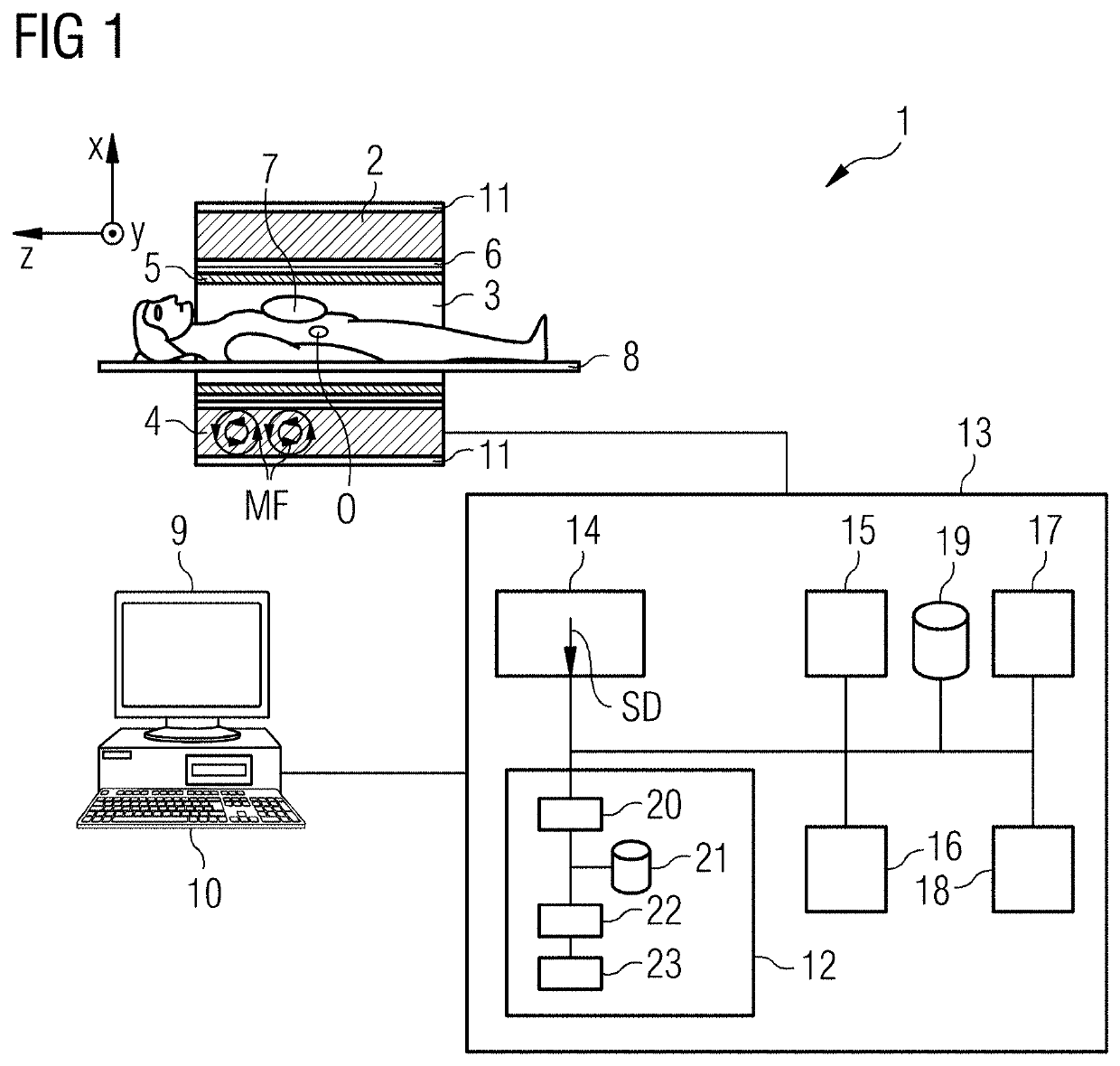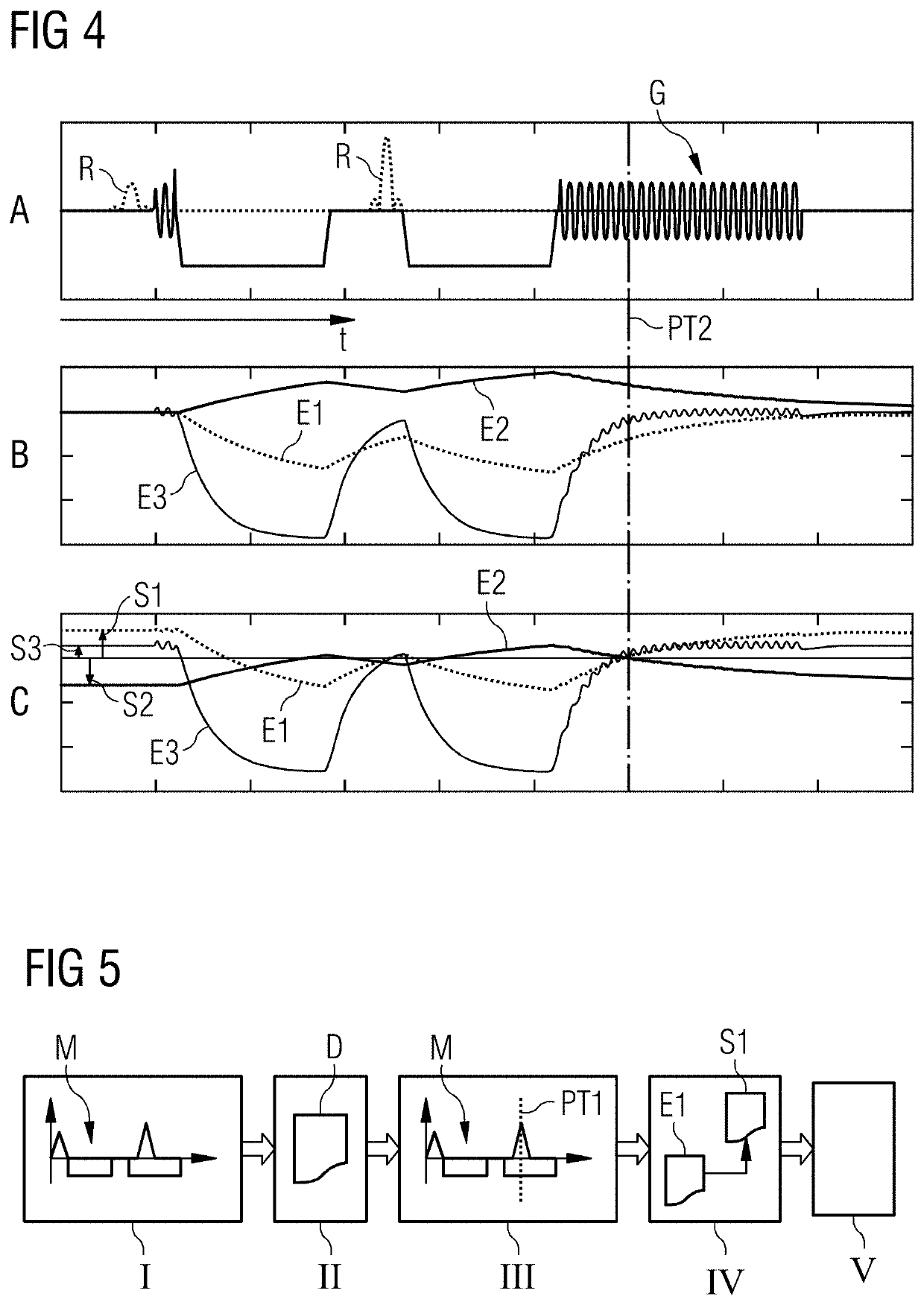Method And Control Unit For Compensation Of Eddy Current Induced Magnetic Fields In Magnetic Resonance Imaging
a magnetic resonance imaging and control unit technology, applied in the field of methods and control units for compensating eddy current induced magnetic fields in magnetic resonance imaging systems, can solve problems such as difficult to easily compensate, additional magnetic field is a problem for image quality, and disturb the image quality of magnetic resonance measurements, etc., to achieve the effect of facilitating the reduction and/or compensation of eddy current induced magnetic fields
- Summary
- Abstract
- Description
- Claims
- Application Information
AI Technical Summary
Benefits of technology
Problems solved by technology
Method used
Image
Examples
Embodiment Construction
[0090]FIG. 1 shows a schematic representation of a magnetic resonance imaging system 1 (“MRI-system”). The MRI system 1 includes the actual magnetic resonance scanner (data acquisition unit) 2 with an examination space 3 or patient tunnel in which a patient or test person is positioned on a driven bed 8, in whose body the actual examination object O is located.
[0091]The magnetic resonance scanner 2 is typically equipped with a basic field magnet system or B0 coil 4, a gradient system or gradient coils 6 as well as an RF transmission antenna system or whole body coil 5 and an RF reception antenna system or local coils 7. In the shown exemplary embodiment, the RF transmission antenna system 5 is a whole-body coil permanently installed in the magnetic resonance scanner 2, in contrast to which the RF reception antenna system 7 is formed as local coils (symbolized here by only a single local coil) to be arranged on the patient or test subject. In principle, however, the whole-body coil c...
PUM
 Login to View More
Login to View More Abstract
Description
Claims
Application Information
 Login to View More
Login to View More - R&D
- Intellectual Property
- Life Sciences
- Materials
- Tech Scout
- Unparalleled Data Quality
- Higher Quality Content
- 60% Fewer Hallucinations
Browse by: Latest US Patents, China's latest patents, Technical Efficacy Thesaurus, Application Domain, Technology Topic, Popular Technical Reports.
© 2025 PatSnap. All rights reserved.Legal|Privacy policy|Modern Slavery Act Transparency Statement|Sitemap|About US| Contact US: help@patsnap.com



